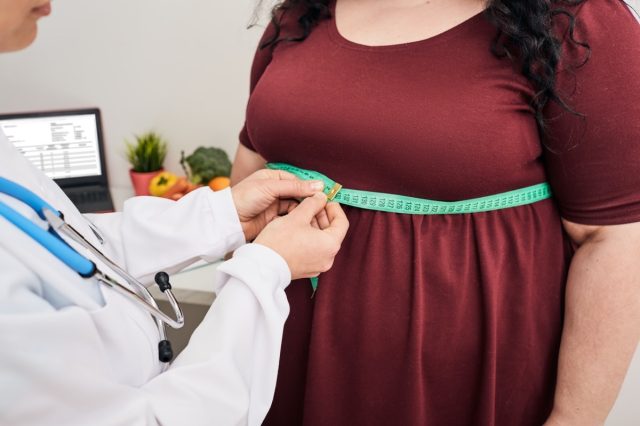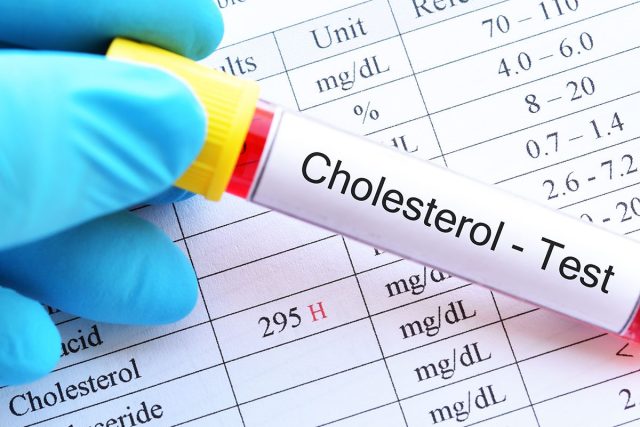An average of 900,000 people a year will experience a blood clot, according to the Centers for Disease Control and Prevention, and they can be deadly. The CDC states, "As many as 100,000 people die of blood clots each year. PE is a leading cause of death in a woman during pregnancy or just after having a baby. Sudden death – 1 of 4 people who have a PE die without warning. Blood clots are a leading cause of death in people with cancer after the cancer itself." Sherry Ross, MD, OB/GYN and Women's Health Expert at Providence Saint John's Health Center in Santa Monica, CA tells us, "Blood clots can develop in the veins in your legs and block the blood flow in different parts of your body depending on where the clot travels. The clot can travel to your lungs (pulmonary emboli or PE) or your brain causing a stroke. Blood clots are extremely dangerous, even deadly in unusual cases." Eat This, Not That! Health spoke with doctors who explained everything to know about blood clots and signs you have one.
What is a Blood Clot and Who is at Risk?

Dr. Ignacio Carrillo-Nunez, Neurologist with Dignity Health St. Mary says, 'The answer is a lump or clump of blood cells that travel and block or obstruct blood vessels blocking the transfer of nutrients, oxygen etc to brain cells. There are many conditions or factors that make a person a higher risk for clots, those with irregular heart beats, with uncontrolled diabetes, morbid obesity, some hereditary conditions but there are many more that would be a long list to enumerate in a short sentence or phrase."
Why Blood Clots Turn Deadly

Dr. Carrillo-Nunez shares, "It really depends on the size of the clot and also the location a small clot may not produce significant damage compared to a large clot, location to a small clot but in a critical area of the brain or heart may cause major damage and may be fatal. No matter the size a clot will always be a serious condition that needs to be managed or treated or taken care of."
Signs You Have a Blood Clot

Dr. Ross explains, "The signs of a blood clot include pain, redness or swelling in one or both legs, sudden unexplained difficulty breathing, chest pain, irregular heartbeat, slurred speech, coughing up blood or loss of coordination. If you have any of these types of symptoms and are on the birth control pill see your healthcare provider. Since the blood is thicker in women affected by blood clots, treatment involves using medications to thin the blood. Anticoagulant medications are used to help thin the blood and prevent the blood clots from becoming bigger."
Dr. Carrillo-Nunez adds, "Sudden loss of consciousness is a sign. When it occurs suddenly usually indicates a clot. When a clot is localize in a brain or spinal cord vessel, we call it stroke or cerebrovascular accident (in reality is not an accident), is a misnomer clots formation can in many cases be preventable and so not really an accident stroke or clots in the brain are more frequent in those patient with more risks factors.
Other signs include:
–Unable to speak or understand
–Paralysis or weakness of face, arm or leg
–Vision loss, double vision"
Risk Factors

Dr. Ross reveals, "The hormones in the pill can make your blood thicker than usual causing hyper-coagulation, which is the medical term for causing excessive clotting. Women who are high risk for blood clots include those with a using estrogen containing birth control, hormone replacement therapy, history of high blood pressure, clotting disorder, high cholesterol levels, cigarette smoking, pregnancy, infections or inflammatory disease, prolonged bed rest, family history of inherited blood clotting disorders, personal history of blood clots, heart disease and obesity."
Blood Clots and Pre-Existing Conditions

Dr. Ross shares, "If the heart is not pumping blood normally throughout the body, the blood flows more slowly and irregularly throughout the body leading to blood clots. Lowering your risk of heart disease starts with eating a healthy plant based diet, exercising regularly, avoiding obesity and keeping your BMI under 25, keeping the LDL or "bad cholesterol" less than 100 mg/dl, avoiding high blood pressure and adding omega-3-fatty acids to your diet.
In addition, Women with certain autoimmune disorders such as Lupus and antiphospholipid antibody syndrome are more likely to have problems with the blood and circulation system making them prone to blood clots. Autoimmune disorders, in general, affect many of the organs in the body including blood vessels and blood flow."
Causes of Blood Clots

According to Dr. Ross, "The causes of blood clots have to do with making the blood move more slowly through the blood vessels causing hyper-coagulation or thick blood. As a result of this phenomenon, the blood can form clots that get lodged in various parts of the body causing dangerous consequences. All of the causes listed below can cause the blood to thicken and create blood clots unexpectedly.
– Hormonal birth control pills
The hormones in the pill can make your blood thicker than usual causing hyper-coagulation, which is the medical term for causing excessive clotting. Blood clots are a rare side effect of being on the birth control pill. The good news is only 1 in 1,000 women each year will develop a blood clot. The hormones in the pill, estrogen and progesterone, are responsible for this increased risk. The newer birth control pills and the transdermal patch increase your risk even more. Your risk of developing a blood clot on the birth control pill is rare. If you smoke cigarettes after the age of 35-years-old, have thrombophilia, a history or a family history of blood clots, a genetic problem that causes clotting or are having surgery or any condition that prevents you from moving around or getting up, you are even more at risk and should not use the pill as your form of contraception. When taking the pill, you have a 4-fold increase in getting a blood clot compared to those women who are not on the pill. Overall the birth control pill is safe, highly effective and the other health benefits outweigh the risks.
–Pregnancy
The hormonal changes during pregnancy, especially with estrogen, can make the blood thicker than usual causing this hyper-coagulation effect in the blood. Blood clots can develop in the veins in your legs and block the blood flow in different parts of your body depending on where the clot travels. The clot can travel to your lungs (pulmonary emboli or PE) or your brain causing a stroke and, less commonly, death. The risk of postpartum PE is less than 1 % per 1000 deliveries. Blood clots can happen anytime during pregnancy but are more common in the third trimester or right after delivery. Women with other medical complications such as high blood pressure, gestational diabetes, obesity, tobacco use, prolonged bed rest, thrombophilia, heart disease, inflammatory bowel disease or other genetic disorders related to blood clotting are more susceptible to blood clots during pregnancy.
–Smoking
Smoking causes many health issues throughout the body and blood clots are one of those problems. Smoking disrupts the body's ability for the blood to clot normally making it clot more easily. The blood vessels throughout the body are disrupted and damaged by the chemicals in cigarettes making the blood clotting risk higher.
–Surgery
Certain surgeries involving the hip, lower abdomen and legs increase your risk of blood clots. Surgeries making you less mobile place you more at risk. Moving around less or causing damage to blood vessels increases the risk of blood clots.Wearing support stocking and moving around soon after surgery help reduce the risk of blood clots.
–Being overweight
Obesity slows the blood flow in the veins which increases the risk of blood clots. Carrying extra fat in the body makes the blood movement slower in the veins making blood clots more common in this group of people. Obese women are often less active which further increases this risk."
Deep Vein Thrombosis

Dr. Ross explains, "Deep vein thrombosis (DVT) begins when a blood clot is made typically in the legs. The causes of DVT include conditions that prevent or slow the movement of blood flow. Causes include pregnancy, surgery, prolonged bed rest or sedentary lifestyle, inherited blood-clotting disorder, birth control pills, smoking, obesity and heart disease. DVT can be dangerous if a blood clot develops in the legs and travels in the blood into the lungs which can create a pulmonary embolism. The best way to prevent DVTs include regular exercise, controlling weight gain and obesity, stop smoking and avoid sitting for prolonged periods of time."
How Can You Get Rid of a Blood Clot?

According to Dr. Carrillo-Nunez, "Once a brain clot has been formed there are only maybe a couple of options, if the clot is identified or presumed to have occurred within or less than 4 ½ hours. There are medications that can be used, so it is very important to identify those cases. Some clots can be removed by a mechanical procedure called thrombectomy, and certain criteria are required for instance location, see if clot is accessible to be removed etc."
No comments:
Post a Comment